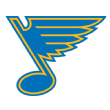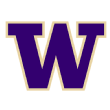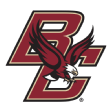Last season, the 2008 Detroit Lions got company in the form of the Cleveland Browns, who joined that Lions team as the only 0-16 squads in NFL history.
But last season is in the rearview mirror for Cleveland. The Browns spent their No. 1 overall pick in the draft on QB of the future Baker Mayfield, and added Tyrod Taylor to the fold. With added pieces and the development of their young guys, they are being pegged as a potential wild-card sleeper and are even favorites in two of their games this year. They even got a win before September ended, defeating the Jets 21-17 on Thursday to break a 19-game winless streak.
It's a stark contrast from 2017, but history proves making that kind of leap will be tough. We took a look at the worst teams from the four major sports leagues and colleges since 2000, and checked out how they fared the season after their woeful records occurred. While it wasn't always pretty the immediate year after, there is often hope down the road.
NFL
 2008 Detroit Lions, 0-16
2008 Detroit Lions, 0-16
Why the futility? It was a long season for the Lions, who became the first team in NFL history to finish 0-16. Five quarterbacks saw action that year. Maybe Detroit might've had better luck if quarterback Jon Kitna wasn't sidelined for the majority of the season, but it wasn't meant to be. Instead, the team ranked 30th in offense and 32nd in defense. Calvin Johnson recorded the first of his seven 1,000-yard seasons, but he was still growing into the role in his second year as a pro.
The next season: 2-14. The Lions came back and won exactly two more games than the year before. Behind 2009 No. 1 pick Matthew Stafford, improvement was a small victory -- the team moved up to 27th in points scored. The defense, on the other hand, was still last in the league.
The aftermath: Detroit has yet to win a playoff game since Stafford was drafted -- the closest was a wild-card game in 2014 when the team fell to the Dallas Cowboys 24-20. Jim Caldwell was fired at the end of last season. Stepping in his place for 2018 is Matt Patricia, the former New England Patriots offensive coordinator.
 2000 San Diego Chargers, 1-15
2000 San Diego Chargers, 1-15
Why the futility? It didn't take long for third-year quarterback Ryan Leaf to cement his reputation as a draft bust, and the second-string quarterback was 37-year-old Jim Harbaugh. It didn't help that San Diego's 1,062 rushing yards were the lowest since the NFL introduced the 16-game season.
The next season: 5-11. The Chargers drafted future Hall of Famers LaDainian Tomlinson and Drew Brees the following season. Brees was eventually traded, but for Tomlinson, 2001 was the gateway to a record-breaking career with San Diego.
The aftermath: The signing of Philip Rivers in 2004 helped usher in numerous playoff runs, including 2006-09 when San Diego made four consecutive postseason appearances. In 2007, the Chargers failed to make it past the New England Patriots in the AFC Championship Game -- the deepest they've gone in recent history. Like the Rams, the Chargers have since relocated to Los Angeles.
 2001 Carolina Panthers, 1-15
2001 Carolina Panthers, 1-15
Why the futility? If fans took an opening win against the Minnesota Vikings as a good sign for the 2001 season, they were mistaken. Behind 29-year-old rookie quarterback Chris Weinke, the Panthers lost the next 15 games, a streak that left head coach George Seifert without a job by the end of the season.
The next season: 7-9. Seifert was succeeded by rookie head coach John Fox, who authored a six-win improvement in 2002. In a year, the defense went from 28th in points against to fifth in the league. Grounded in the efforts of Julius Peppers, Dan Morgan and Kris Jenkins, the Panthers allowed just 4.5 yards per offensive play.
The aftermath: It was a fast turnaround for the Panthers. Two seasons after winning just one game, Carolina made its first Super Bowl appearance, losing a thriller to the Patriots. The team continued to make playoff runs on and off throughout the 2000s, and in 2015 Cam Newton and Ron Rivera took the Panthers back to the Super Bowl.
 2007 Miami Dolphins, 1-15
2007 Miami Dolphins, 1-15
Why the futility? One year after Nick Saban vacated his position as head coach, the Cam Cameron-coached Dolphins were 0-13 and teetering on the edge of completing a winless season when they snuck by the Baltimore Ravens 22-16 in overtime.
The next season: 11-5. Cameron lasted only a year with the Dolphins before a new brain trust, including executive vice president/football operations Bill Parcells and head coach Tony Sparano, sought to turn things around. In turn, the 2008 Dolphins went 11-5 to finish first in the AFC East, tying the NFL record for biggest turnaround with the 1999-2000 Colts.
The aftermath: Since then, the Dolphins have made just one playoff run (2016), an outlier nestled within a string of sub-500 seasons. Most recently the team shed some of its biggest contracts by releasing Ndamukong Suh and trading Jarvis Landry to help clear $17 million in cap space.
 2009 St. Louis Rams, 1-15
2009 St. Louis Rams, 1-15
Why the futility? The Rams were outscored 436-175 in 2009, hence the single-win season. Their lone victory came against the Detroit Lions, who were just coming off the first 0-16 record in football history. The rotating cast of quarterbacks -- Marc Bulger, Kyle Boller and Keith Null -- combined for a total of just 11 touchdowns.
The next season: 7-9. If anything good came out of the previous season, it was having the No. 1 pick, which the Rams used to snatch up quarterback Sam Bradford. The combination of Bradford and Steven Jackson elevated St. Louis to a six-win improvement, with a loss at Seattle in Week 17 narrowly preventing the Rams from winning a weak NFC West. Bradford was selected NFL Offensive Rookie of the Year.
The aftermath: The Rams wouldn't make a playoff run until 2017, a year after they relocated to Los Angeles and traded up for the right to draft Jared Goff at No. 1 overall.
NBA
 2011-12 Charlotte Bobcats, 7-59 (Lockout-shortened season)
2011-12 Charlotte Bobcats, 7-59 (Lockout-shortened season)
Why the futility? The excuse of being an expansion team doesn't hold up when you're in your eighth season. On paper, this Bobcats (now the Hornets) team had some notable names -- rookies Kemba Walker and Bismack Biyombo, an aging Corey Maggette and Boris Diaw. But it also had an underperforming Tyrus Thomas, while Gerald Henderson and Maggette were its leading scorers. The lockout limited the number of games -- or potential losses -- that this team took part in.
The next season: 21-61. The next season, a full 82 games, saw the Bobcats win 21 games -- a marked improvement. But their record of 21-61 still left them in fourth place in the Southeast Division.
The aftermath: It was two years later that the team saw a drastic improvement, finishing 43-39 and making the playoffs. Walker led the way in his third season, and free-agent signee Al Jefferson bolstered the frontline. Charlotte won 48 games in 2015-16 -- the high-water mark since the NBA's return to the Queen City in 2004-05 -- but the city's drought without a playoff series win, which extends back to 2002, remains in effect.
 2015-16 Philadelphia 76ers, 10-72
2015-16 Philadelphia 76ers, 10-72
Why the futility? Where to start ... Well, we're in prime "Trust the Process" territory here. The Sixers had just drafted Joel Embiid, but he sat out the season with injury. The since-banished Jahlil Okafor led the team in scoring. Ish Smith was second. Nerlens Noel was still a key piece. The team ranked 28th in the league in attendance. It was a display of tanking at its finest.
The next season: 28-54. The team drafted Ben Simmons with the No. 1 overall pick in the 2016 draft. He, like Embiid in his first year, also sat out the entire season. But the Sixers improved by 18 games. Embiid and Dario Saric made their debuts. Hints of promise were on the horizon.
The aftermath: The Process sped up a bit, and just two seasons after their 10-win campaign the Sixers not only made the playoffs but made their mark as a team to be reckoned with. Behind Simmons and Embiid, Philadelphia made the second round of the playoffs and made its presence felt in the Eastern Conference.
 2009-10 New Jersey Nets, 12-70
2009-10 New Jersey Nets, 12-70
Why the futility? Being the first team in NBA history to start a season 0-18 doesn't help. Neither does losing 28 of your first 30 games. Or 40 of your first 43. It's not like the team didn't have good players. Brook Lopez and Devin Harris were more than serviceable. But they didn't get much help. Courtney Lee and Yi Jianlian had to play key roles, and injuries beset the team. Lawrence Frank didn't make it to December before being fired.
The next season: 24-58. It's not hard to improve on 12 wins, and the 2010-11 Nets did just that, finishing 14 games better under new coach Avery Johnson. After whiffing on LeBron James in free agency, the Nets handed out contracts to Travis Outlaw, Jordan Farmar and Johan Petro. They also traded for Anthony Morrow in the offseason. The biggest move, though, was trading for Deron Williams at the trade deadline in 2011. The Nets wanted their star, and they got him.
The aftermath: It wasn't until the 2012-13 season that the Nets, in their first season in Brooklyn, made the playoffs again, behind Williams, Lopez and addition Joe Johnson. During the 2013 offseason, the team traded for Paul Pierce and Kevin Garnett with the hopes of winning a title. That didn't happen, and though the team made the playoffs the next couple of years, they gave up numerous draft picks and have been in rebuilding mode since the 2015-16 season.
 2004-05 Atlanta Hawks, 13-69
2004-05 Atlanta Hawks, 13-69
Why the futility? Antoine Walker (who was traded away by midseason) and Al Harrington arrived in Atlanta, but did not bring any wins with them. The team had separate 13- and 14-game losing streaks, were 29th in the league in attendance, and scored just 92.7 points per game. Rookies Josh Smith and Josh Childress were bright spots.
The next season: 26-56. The Hawks were still bad the next year, but managed to double their win total. Acquiring Joe Johnson from the Phoenix Suns helped, and the team drafted Marvin Williams and signed Zaza Pachulia.
The aftermath: Atlanta continued in mediocrity until the 2008-09 season, when it advanced to the Eastern Conference semis behind Johnson and Al Horford. This past season was the first time the Hawks have missed the playoffs since then.
MLB
 2003 Detroit Tigers, 43-119
2003 Detroit Tigers, 43-119
Why the futility? As if a 55-106 record the year before wasn't bad enough, the Tigers hit rock-bottom in 2003. This team overachieved in every category of bad and broke the American League record for losses in a season. After losing key players to trades and free agency, first-year manager and former Tigers shortstop Alan Trammell was forced to rely on a lineup that wasn't very deep to begin with.
The next season: 72-90. The Tigers lured free agent Ivan Rodriguez to Motor City and traded for Carlos Guillen, both of whom hit above the .300 mark to help the Tigers improve by 29 games. Pitching was still lacking though, and none of Detroit's starters could keep his ERA under 4.00.
The aftermath: For the fans who weathered that historically bad season three years prior, 2006 offered redemption in the form of a World Series appearance. The Tigers fired Trammell the previous offseason and brought on Jim Leyland, who was later voted American League Manager of the Year. Curtis Granderson and Justin Verlander -- two Tigers draft picks -- highlighted a successful rebuild. After losing to the St. Louis Cardinals, the Tigers returned to the World Series in 2012 but fell to the San Francisco Giants in four games.
 2013 Houston Astros, 51-111
2013 Houston Astros, 51-111
Why the futility? 2013 marked the Astros' third straight season with 100-plus losses, which was capped off by a 16-game losing streak at the end of September. The total number of losses from those three years put together? 324. Houston led the league with the highest ERA, errors committed and runs allowed per game.
The next season: 70-92. Houston finished three games ahead of the Texas Rangers to mark the first time since 2010 the team didn't finish last in its division. Of course it helped to have Jose Altuve break out with a .341 batting average on his way to the All-Star Game and a Silver Slugger Award. Then there was the debut of George Springer, the 11th overall pick in 2011. None of this would save Bo Porter's job, as he was replaced by interim manager Tom Lawless with 24 games left in the season.
The aftermath: In 2017, the Astros became the fourth team in baseball to go from 100 losses to World Series champions within five seasons. It was a rapid progression foreshadowed by an 86-win season in 2015 and a farm system that was finally starting to produce results in the majors. Now that same core makes up the No. 1 team in the American League West, and 2013 feels like a distant bad dream.
 2004 Arizona Diamondbacks, 51-111
2004 Arizona Diamondbacks, 51-111
Why the futility? Randy Johnson threw a perfect game against the Atlanta Braves in 2004, but as far as bright spots go, that was about it. The team traded veteran Curt Schilling to the Boston Red Sox for players who never panned out, while various members of the team rotated turns on the disabled list. The contrast was stark. Just three seasons earlier, the Diamondbacks had won the franchise's first World Series by beating the New York Yankees in seven games. The new reality of 2004 became more pronounced after the team won only four games between June 18 and July 25.
The next season: 77-85. A year after sending Schilling to Boston, the Diamondbacks traded Johnson -- the other half of the 2001 World Series co-MVPs -- to the Yankees. Arizona ended up doing just fine, finishing five games behind the San Diego Padres for second in the National League West.
The aftermath: By 2007, the team had replaced their traditional black, turquoise and purple uniforms with red and black ones. They were also winning a lot more. They led the NL with a 90-72 record and won the NL West for the first time since 2001. The franchise has made two postseason appearances since 2007, including last year.
 2002 Tampa Bay Devil Rays, 55-106
2002 Tampa Bay Devil Rays, 55-106
Why the futility? The 2002 season remains Tampa Bay's worst in franchise history. Though it seems fair to note that the team only entered the league in 1998, this was a particularly rough year that included a 15-game losing streak and 13 straight road losses.
The next season: 63-99. The Devil Rays avoided the 100-loss mark by one game -- not much better than the previous year. They still finished last in the AL East.
The aftermath: The Rays would remain in the wilderness until 2008, when they managed to go from worst in the division to playoff team. Their first postseason appearance took the team all the way to the World Series, where they lost to the Philadelphia Phillies. Since then, the Rays have made playoff runs in 2010, 2011 and 2013.
 2005 Kansas City Royals, 56-106
2005 Kansas City Royals, 56-106
Why the futility? Zack Greinke's ERA ballooned to 5.80 in 2005 and the rest of the pitching staff wasn't much better -- as a team the Royals were last in ERA. They allowed the second-most hits in baseball and were backed by a defense that led the league in errors. Offensively, designated hitter Mike Sweeney made the season more bearable, but it wasn't enough to offset a 19-game losing streak.
The next season: 62-100. The Royals reached 100 losses for a third straight season and once again finished last in the AL Central. Like the year before, Kansas City was unable to get past the .500 bump at any point during the season. They were, however, able to retain a manager (Buddy Bell) for an entire year -- stability they didn't have after going through three in 2005.
The aftermath: Hired in the midst of the the Royals' third consecutive 100-loss season, general manager Dayton Moore started building his team with Mike Moustakas, Eric Hosmer, Kelvin Herrera, James Shields and Wade Davis. In 2014, their first playoff appearance since 1985, the Royals stretched a wild-card win into a World Series appearance. They lost to the Giants, but returned a year after and finally got that ring.
NHL
(Doesn't include 48-game, lockout-shortened 2012-13 season)
 1999-2000 Atlanta Thrashers, 14-57-7-4
1999-2000 Atlanta Thrashers, 14-57-7-4
Why the futility? It's not easy being an expansion team. The Thrashers found that out the hard way, finishing their inaugural season with just 39 points. They were shut out 12 times, scored the fewest goals in the league and allowed the most.
The next season: 23-45-12. In their second season, the Thrashers improved by nine wins, but finished fourth in their division and again missed the playoffs.
The aftermath: The team made the playoffs just once (2007) in its 11 seasons in Atlanta. In 2011, the franchise moved to Winnipeg and became the Jets, where they've since made the playoffs twice, most recently reaching the Western Conference finals this past season.
 2001-02 Atlanta Thrashers, 19-47-11
2001-02 Atlanta Thrashers, 19-47-11
Why the futility? It was a rough start for Atlanta. The 2001-02 season wasn't as bad as the team's inaugural season ... but the record wasn't pretty. The Thrashers finished last in their division. They did have some notable talent in Dany Heatley and Ilya Kovalchuk, but it wasn't enough to keep them out of the cellar.
The next season: 31-39-7. The Thrashers were better during the 2002-03 season, finishing third in the Southeast Division. But they were still last in the league in goals allowed and missed the playoffs.
The aftermath: See above. Hockey in Atlanta wasn't the most successful.
 2000-01 New York Islanders, 21-51-7-3
2000-01 New York Islanders, 21-51-7-3
Why the futility? The captain (Kenny Jonsson) resigning didn't help. Neither did being the most-penalized team in the NHL. There was some good news, though: The team was able to nab the No. 1 pick in the NHL draft.
The next season: 42-28-8. The Isles made quite the turnaround the next season, doubling their win total and finishing in second place in the Atlantic Division. They also made the playoffs for the first time since 1994. Alexei Yashin led the team in points and goals.
The aftermath: The Isles have made the playoffs on and off since their reappearance in 2002, but haven't advanced past the second round despite having star center John Tavares on their roster from 2009 to 2018.
 2013-14 Buffalo Sabres, 21-51-10
2013-14 Buffalo Sabres, 21-51-10
Why the futility? Coach Ron Rolston was fired midseason as the Sabres were well on their way to finishing last in the Atlantic Division. Buffalo was last in goals for, and 25th out of 30 in goals against.
The next season: 23-51-8. It didn't get much better the next season, as the team finished in last place in the Eastern Conference again. Tyler Ennis led the team in points and goals.
The aftermath: The good news for the Sabres came in the form of Jack Eichel, the second overall draft pick in 2015. However, the team has still finished seventh or eighth in the division every year since, and hasn't made the playoffs.
 2005-06 St. Louis Blues, 21-46-15
2005-06 St. Louis Blues, 21-46-15
Why the futility? It was a rough post-lockout season for St. Louis. The Blues finished 15th out west, 30th overall in scoring and nabbed only 57 points, worst in the league. Their playoff streak of 25 straight appearances also came to an end.
The next season: 34-35-13. The Blues improved a bit the following season, finishing third in the Central Division. After a slow start to the season, the team went on a 13-3-4 run to get back to respectability. Doug Weight and Lee Stempniak led the team in points.
The aftermath: In 2009, the Blues made the playoffs again and have made the playoffs six other times since then, making it as far as the conference finals in 2016.
College football
Power 5 conferences only
 2000, 2001 Duke Blue Devils (both 0-11)
2000, 2001 Duke Blue Devils (both 0-11)
Why the futility? Football has never been Duke's forte, but 2000 and 2001 proved to be two of its worst seasons ever. East Carolina routed the Blue Devils in their 2000 season opener, shutting them out 38-0. The rest of the season was much of the same, including five losses by more than 30 points. Déjà vu struck the Blue Devils in 2001 as they went 0-8 in conference play in consecutive seasons.
The next season: 2-10. Third time's the charm? Not for the Blue Devils -- though they did manage to avoid another season sweep. The 2002 season started off with Duke ending its 23-game losing streak with a 23-16 win over East Carolina, but the team would win just once more all year (beating Navy) and again went winless in the ACC.
The aftermath: The Blue Devils' struggles continued as the teamed failed to finish .500 in each of the next four seasons, ultimately resulting in Ted Roof replacing Carl Franks in 2004 (more to come on that). But their woes persisted, and Duke would not see a winning season for a decade. More recently, David Cutcliffe has turned the program into one of the league's most dependable, going to bowl games in five of the past six years.
 2006 Duke Blue Devils, 0-12
2006 Duke Blue Devils, 0-12
Why the futility? It shouldn't be that hard to improve upon a one-win season, but Duke proved that in fact it was. The team regressed from one win to zero wins in 2006, marking one of the worst seasons in college football history. Under the direction of Roof, the team went scoreless in three games. In the final game of the season, Duke had a chance against cross-town rival North Carolina, but was outscored 45-44.
The next season: 1-11. After a winless season, the only thing to do is improve. In 2007, Duke squeaked out a win on the road against Northwestern. It would be the only win of the season.
The aftermath: The Blue Devils remained consistently under .500 until 2012, when the team finished 6-7, culminating in a trip to the Belk Bowl. Since then, Duke seemed to be on an upward trajectory especially after capturing its first 10-win season in 2013. The 2016 season saw a dip in production -- with the team winning only four games -- but 2017 ended with a Quick Lane Bowl win.
 2015 Kansas Jayhawks, 0-12
2015 Kansas Jayhawks, 0-12
Why the futility? With new coach David Beaty calling the shots at Memorial Stadium, there were slight glimmers of hope for Kansas, though that was short-lived. The Jayhawks struggled to find a rhythm after losing nearly all of their experienced players -- not to mention the uncertainty surrounding starting quarterback Michael Cummings, who suffered a knee injury in the spring. Kansas dropped all 12 of its games, including two by more than 50 points.
The next season: 2-10. Kansas won two games in 2016, including an overtime win over Texas, marking a slight improvement from the previous year. The team still finished 1-8 and in last place in the Big 12.
The aftermath: Progress has been minimal for the Jayhawks during the past two seasons. They finished 1-11 in 2017 and have gone nearly nine years without a road win. Maybe this year's first road game against Central Michigan will produce the results Kansas so desperately needs.
 2008 Washington Huskies, 0-12
2008 Washington Huskies, 0-12
Why the futility? Washington opened the season with a blowout loss to conference opponent Oregon. Things took a turn for the worse when starting quarterback Jake Locker suffered a broken thumb in his throwing hand during the second quarter of the Huskies' game against Stanford. The team finished the season with a 41-point loss to California, ending as the only team in the country without a single win that season. Head coach Tyrone Willingham stepped down after the season.
The next season: 5-7. The Huskies improved upon their poor showing from the previous season, graduating to a five-win campaign under new coach Steve Sarkisian in 2009. They finished 4-5 in the conference -- good for seventh in the Pac-10 -- and gained quality wins against the likes of then-third ranked USC, and redeemed themselves against California to close the season out.
The aftermath: Washington has since avoided having a losing season in each of the past eight years and competed in bowl games in each of those years as well. In 2016, the Huskies made it all the way to the College Football Playoff semifinals before losing to No. 2-ranked Alabama. Last year, Washington put together a campaign for the CFP, but finished the season with a 10-2 record -- still good for 11th in the country.
College basketball
Power 5 conferences only
 2015-16 Boston College Eagles, 7-25 (0-18 ACC)
2015-16 Boston College Eagles, 7-25 (0-18 ACC)
Why the futility? It was a rebuilding year for Boston College after the loss of Olivier Hanlan, among other key players. The Eagles lacked depth and an overall sense of leadership with the departures from the previous class. BC managed to put together one of the worst seasons in ACC history, and along the way captured the record for the most conference losses by a team in a season.
The next season: 9-23 (2-16 ACC). After a poor showing in 2015-16, the Eagles ended the 2016-17 season on a 15-game losing streak, once again placing them at the bottom of the ACC. The team did, however, improve its conference record from the previous year to 2-16 in ACC play, and also saw the emergence of Jerome Robinson.
The aftermath: During the 2017-18 season, the Eagles went 19-16 and reached the NIT.
 2015-16 Rutgers Scarlet Knights, 7-25 (1-17 Big Ten)
2015-16 Rutgers Scarlet Knights, 7-25 (1-17 Big Ten)
Why the futility? The team had the talent to put together one of its better seasons in recent years, but wasn't able to remain consistent. The Scarlet Knights opened the season with three wins in their first four games before going on a four-game losing streak. Their only conference win came late in the season against a Minnesota team that finished just above them in the Big Ten. Coach Eddie Jordan was fired after the season.
The next season: 15-18 (3-15 Big Ten). Despite more than doubling their season total wins in 2017, Rutgers finished with a losing record for the 10th year in a row under new coach Steve Pikiell. In a season where they had one of the easiest nonconference schedules, inconsistency was this team's downfall. Rutgers began the season 11-1 before going on yet another losing streak.
The aftermath: Rutgers is coming off another 15-win season and its 2018 recruiting class has a chance to give the Scarlet Knights a few more tallies in the win column.
 2015-16 Minnesota Golden Gophers, 8-23 (2-16 Big Ten)
2015-16 Minnesota Golden Gophers, 8-23 (2-16 Big Ten)
Why the futility? Turbulence filled Minnesota's locker room during the 2015-16 season. With three players suspended, the Gophers never hit their stride. It looked as if the team would go winless in Big Ten play until Minnesota captured back-to-back wins against Maryland and Rutgers. The Gophers' 2-16 record in the conference barely edged out last-place Rutgers.
The next season: 24-10 (11-7 Big Ten). The revamped Golden Gophers had a complete turnaround in 2017, tripling their wins and securing the fourth spot in the conference. The team earned its first NCAA tournament bid since 2013, but was upset by Middle Tennessee in its first-round matchup.
The aftermath: A preseason AP top-15 team before the start of the 2017-18 season, the Golden Gophers showed promise while coming off one of their best seasons in recent years. Minnesota began the season winning seven in a row but ended up losing 14 of its last 16 games, a circumstance inspired in part by the suspension and later expulsion of center Reggie Lynch. With a core led by senior forward Jordan Murphy and talented young guard Isaiah Washington, the Golden Gophers have a chance to bounce back in 2018-19.
 2010-11 Wake Forest Demon Deacons, 8-24 (1-15 ACC)
2010-11 Wake Forest Demon Deacons, 8-24 (1-15 ACC)
Why the futility? The team experienced growing pains while adapting to new head coach Jeff Bzdelik, finishing last in the ACC with a 1-15 record in conference play. The team lost the majority of its games by double-digits.
The next season: 13-18 (4-12 ACC). In his second year with the Demon Deacons, Bzdelik's team continued to struggle but quadrupled its ACC wins. The team tied for ninth in the conference with four ACC wins.
The aftermath: Bzdelik resigned after four years and with a 51-76 record. The Demon Deacons finally returned to NCAA tournament play in 2017 under Danny Manning, when they lost in the First Four.
ESPN.com's Dana Lee and Dania Haughton also contributed to this story.
